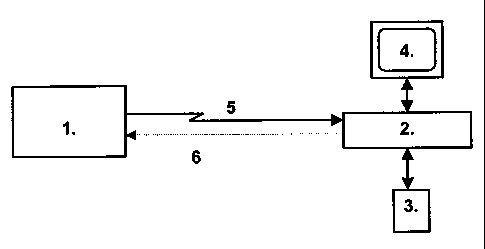Some of the information on this Web page has been provided by external sources. The Government of Canada is not responsible for the accuracy, reliability or currency of the information supplied by external sources. Users wishing to rely upon this information should consult directly with the source of the information. Content provided by external sources is not subject to official languages, privacy and accessibility requirements.
Any discrepancies in the text and image of the Claims and Abstract are due to differing posting times. Text of the Claims and Abstract are posted:
| (12) Patent: | (11) CA 2428502 |
|---|---|
| (54) English Title: | METHOD FOR INDUCING UPGRADING OF AN EXPANDABLE PRODUCT |
| (54) French Title: | METHODE D'INCITATION DE MISE A JOUR D'UN PRODUIT EVOLUTIF |
| Status: | Term Expired - Post Grant Beyond Limit |
| (51) International Patent Classification (IPC): |
|
|---|---|
| (72) Inventors : |
|
| (73) Owners : |
|
| (71) Applicants : |
|
| (74) Agent: | GOWLING WLG (CANADA) LLP |
| (74) Associate agent: | |
| (45) Issued: | 2011-02-15 |
| (86) PCT Filing Date: | 2001-11-12 |
| (87) Open to Public Inspection: | 2002-05-16 |
| Examination requested: | 2006-09-18 |
| Availability of licence: | N/A |
| Dedicated to the Public: | N/A |
| (25) Language of filing: | English |
| Patent Cooperation Treaty (PCT): | Yes |
|---|---|
| (86) PCT Filing Number: | PCT/IB2001/002130 |
| (87) International Publication Number: | WO 2002039740 |
| (85) National Entry: | 2003-05-12 |
| (30) Application Priority Data: | ||||||
|---|---|---|---|---|---|---|
|
The security modules used in pay television and in other applications are
intended to
develop and thus to be replaced. In order to promote the replacement of a
previous
generation by a new one, the method according to the invention consists in
sending
by a control centre in the data stream a replacement prompt command including
the
minimal characteristics of the security module of the new generation,
establishing the
characteristics of the security module being used, and comparing with the
minimal
characteristics defined by the received command, and according to the results
of this
comparison, starting a prompt cycle by sending a warning indication on the
screen.
Les modules de sécurité utilisés aussi bien dans la télévision ô péage que dans d'autres applications utilisant un moyen quelconque de visualisation, sont appelés ô évoluer et donc être remplacés. Afin de favoriser ce remplacement d'une génération antérieure par celui d'une nouvelle génération, la méthode selon l'invention consiste à envoyer par un centre de contrôle dans le flux de données, une commande d'incitation de remplacement incluant les caractéristiques minimales du module de sécurité de nouvelle génération, établir les caractéristiques du module de sécurité en cours d'utilisation et comparer avec les caractéristiques minimales définies dans la commande reçue, et selon le résultat de la comparaison, initier un cycle incitatif par l'envoi d'un avertissement sur l'organe de visualisation.
Note: Claims are shown in the official language in which they were submitted.
Note: Descriptions are shown in the official language in which they were submitted.

2024-08-01:As part of the Next Generation Patents (NGP) transition, the Canadian Patents Database (CPD) now contains a more detailed Event History, which replicates the Event Log of our new back-office solution.
Please note that "Inactive:" events refers to events no longer in use in our new back-office solution.
For a clearer understanding of the status of the application/patent presented on this page, the site Disclaimer , as well as the definitions for Patent , Event History , Maintenance Fee and Payment History should be consulted.
| Description | Date |
|---|---|
| Inactive: IPC from PCS | 2022-09-10 |
| Inactive: Expired (new Act pat) | 2021-11-12 |
| Letter Sent | 2021-05-12 |
| Letter Sent | 2020-11-12 |
| Common Representative Appointed | 2019-10-30 |
| Common Representative Appointed | 2019-10-30 |
| Change of Address or Method of Correspondence Request Received | 2018-06-11 |
| Grant by Issuance | 2011-02-15 |
| Inactive: Cover page published | 2011-02-14 |
| Inactive: IPC expired | 2011-01-01 |
| Pre-grant | 2010-12-03 |
| Inactive: Final fee received | 2010-12-03 |
| Notice of Allowance is Issued | 2010-08-05 |
| Letter Sent | 2010-08-05 |
| Notice of Allowance is Issued | 2010-08-05 |
| Inactive: Approved for allowance (AFA) | 2010-07-29 |
| Letter Sent | 2010-04-08 |
| Amendment Received - Voluntary Amendment | 2009-07-08 |
| Inactive: S.30(2) Rules - Examiner requisition | 2009-01-23 |
| Letter Sent | 2006-10-11 |
| Request for Examination Received | 2006-09-18 |
| Request for Examination Requirements Determined Compliant | 2006-09-18 |
| All Requirements for Examination Determined Compliant | 2006-09-18 |
| Inactive: IPC from MCD | 2006-03-12 |
| Inactive: IPC from MCD | 2006-03-12 |
| Inactive: IPC assigned | 2003-11-04 |
| Inactive: First IPC assigned | 2003-11-04 |
| Inactive: Cover page published | 2003-07-16 |
| Inactive: Notice - National entry - No RFE | 2003-07-14 |
| Letter Sent | 2003-07-14 |
| Application Received - PCT | 2003-06-11 |
| National Entry Requirements Determined Compliant | 2003-05-12 |
| Application Published (Open to Public Inspection) | 2002-05-16 |
There is no abandonment history.
The last payment was received on 2010-10-21
Note : If the full payment has not been received on or before the date indicated, a further fee may be required which may be one of the following
Please refer to the CIPO Patent Fees web page to see all current fee amounts.
Note: Records showing the ownership history in alphabetical order.
| Current Owners on Record |
|---|
| NAGRAVISION S.A. |
| Past Owners on Record |
|---|
| SERGE GAUMAIN |